The switch: changing attacking angles
Use this session to encourage and develop quick and incisive football. Players should be looking to quickly switch the point of attack, utilising forward and angled passing, one-twos, plus intelligent off-the-ball movement.

| Area | 55x35 yards |
| Equipment | Set of poles, balls |
| No. of Players | 14 |
This session is designed to encourage and develop quick and incisive football. Players should be looking to quickly switch the point of attack, utilising forward and angled passing, one-twos, plus intelligent off-the-ball movement. The ability to retain possession and switch play quickly and effectively is important for breaking down and moving opposition defences about, therefore creating space for goalscoring opportunities.
What do I get the players to do?
We play 7v7, with each team defending three goals spaced at equal points along the longer sides. The coach serves the ball to one team, whose aim is to score in any of the opposition’s three goals. In possession, the attacking team must aim to pass quickly and switch play, looking for forward and angled passes. If they cannot score, they must keep the ball (1a/1b/1c).
1a
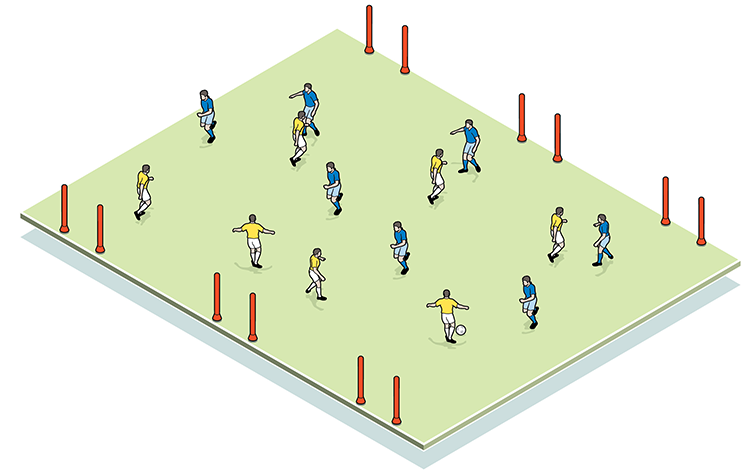
1b
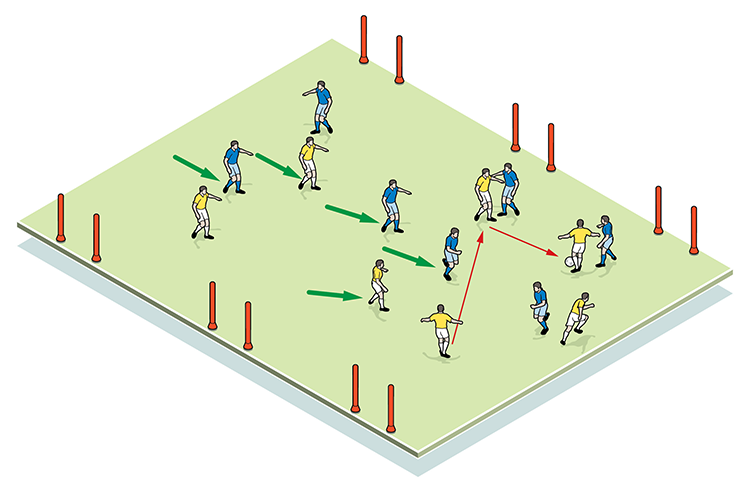
1c

What are the key things to look for technically/tactically?
Technically we are looking for players to move the ball quickly whilst maintaining control at all times. We’d expect the switch of play to vary in its execution - either a number of short quick passes or one long ball.
In addition, there are key tactical aspects to be achieved. If possible, we look for the attacking team to manufacture 2v1 situations on the opposite side of the play (i.e. in non-ball areas). The switch is progressive and should ultimately end with goalscoring situations created from crosses, shots or one-twos.
How do I progress the session?
We progress the session with the introduction of sweepers (2a). Each team has one sweeper who plays behind the goal line, therefore off the playing area. Neither team can score in a goal that the sweeper is protecting.
2a
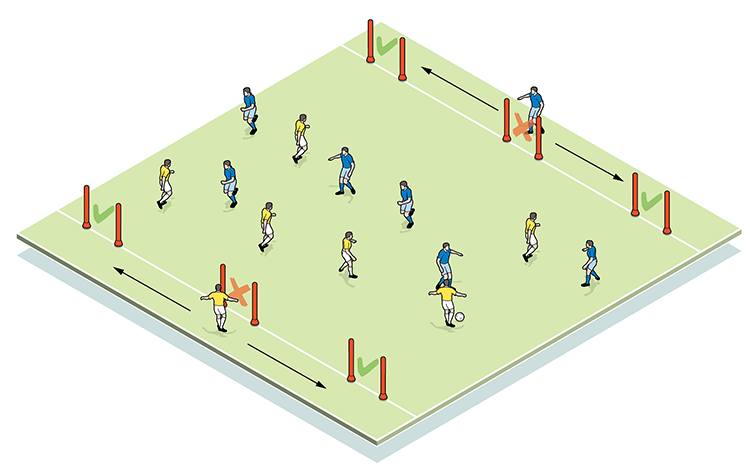
The introduction of sweepers forces the players to keep their heads up in order to establish where attacking play should be directed. The presence of this player on each team should encourage the opposition players to switch the point of attack quickly before the sweeper is able to get across and defend (2b/2c).
2b
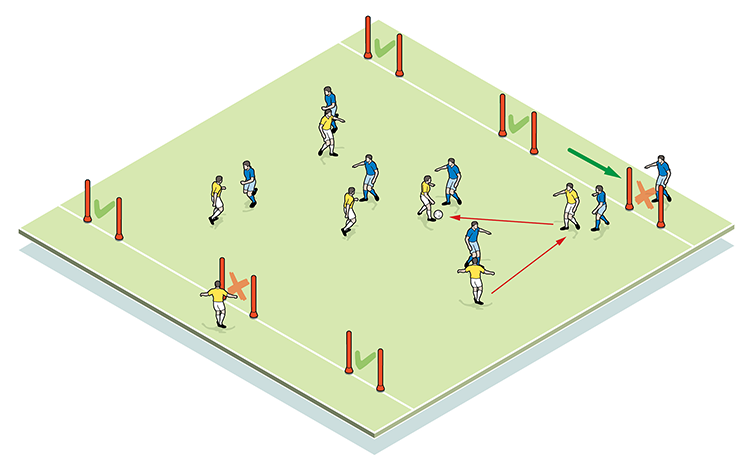
2c
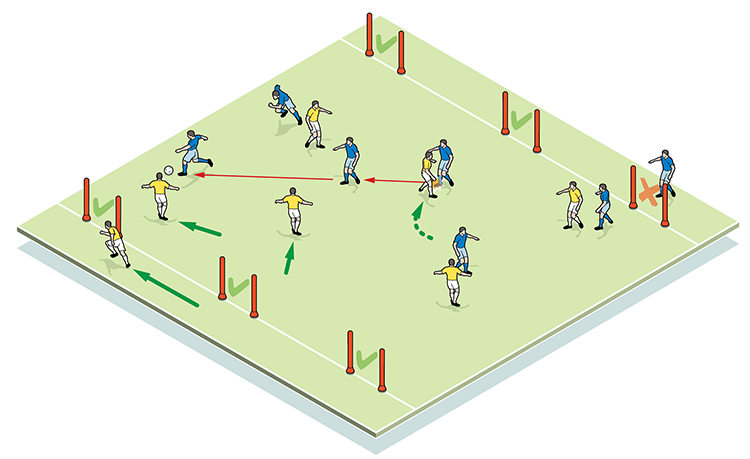
How would you put this into a game situation?
The drill can be increased to 10 or 11-a-side to become a game situation.
In terms of playing area, use a half pitch extended a few yards past the halfway line. There is one full-sized goal at the end of the pitch and three small goals positioned just beyond the halfway line, spaced equally along the line, as in the diagram.
The yellow team, which has a keeper in place, can score in any of the three goals. It must construct moves building from the back. The blue team attacks the one full-sized goal. Tactically, it must retain shape and position and should press from the front given they are shooting at only one target (3a).
3a
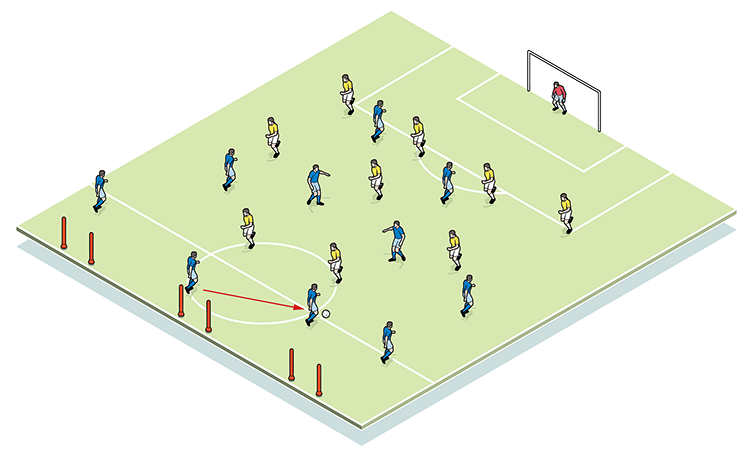
We encourage attacking play with a positive outcome every time. Teams must play one-twos, crosses, unleash shots and perform switches between playing areas (3b).
3b
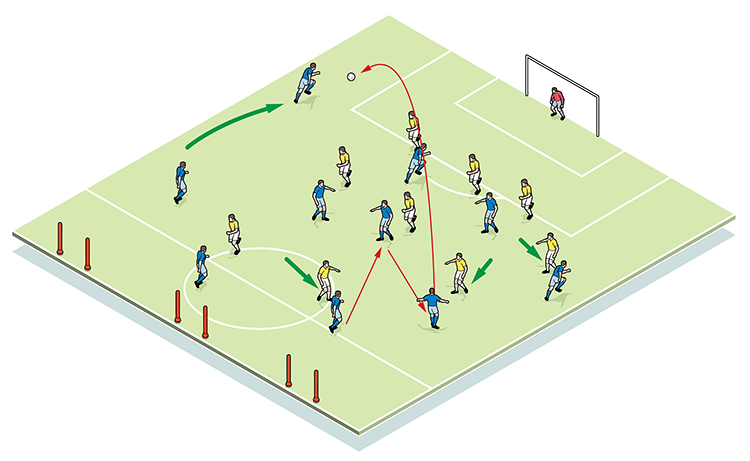
Depending on the coach’s requirements, the session’s focus can alter between the defensive or offensive elements of switching possession play (3c).
3c
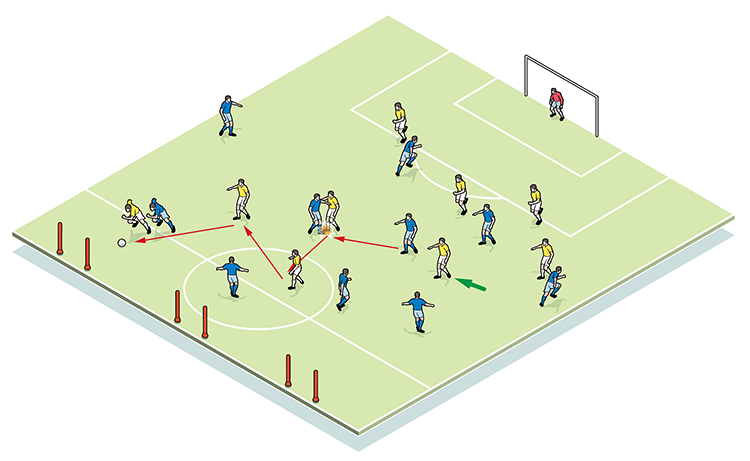
Editor's Picks
Attacking transitions
Deep runs in the final third
Using the goalkeeper in build-up play
Intensive boxes drill with goals
Penetrating the final third
Creating and finishing
My philosophy
Pressing initiation
Compact team movement
Coaches' Testimonials

Alan Pardew

Arsène Wenger

Brendan Rodgers

Carlos Carvalhal

José Mourinho

Jürgen Klopp

Pep Guardiola

Roy Hodgson

Sir Alex Ferguson

Steven Gerrard
Coaches' Testimonials

Gerald Kearney, Downtown Las Vegas Soccer Club

Paul Butler, Florida, USA

Rick Shields, Springboro, USA

Tony Green, Pierrefonds Titans, Quebec, Canada
Join the world's leading coaches and managers and discover for yourself one of the best kept secrets in coaching. No other training tool on the planet is written or read by the calibre of names you’ll find in Elite Soccer.
In a recent survey 92% of subscribers said Elite Soccer makes them more confident, 89% said it makes them a more effective coach and 91% said it makes them more inspired.
Get Monthly Inspiration
All the latest techniques and approaches
Since 2010 Elite Soccer has given subscribers exclusive insight into the training ground practices of the world’s best coaches. Published in partnership with the League Managers Association we have unparalleled access to the leading lights in the English leagues, as well as a host of international managers.
Elite Soccer exclusively features sessions written by the coaches themselves. There are no observed sessions and no sessions “in the style of”, just first-hand advice delivered direct to you from the coach.









